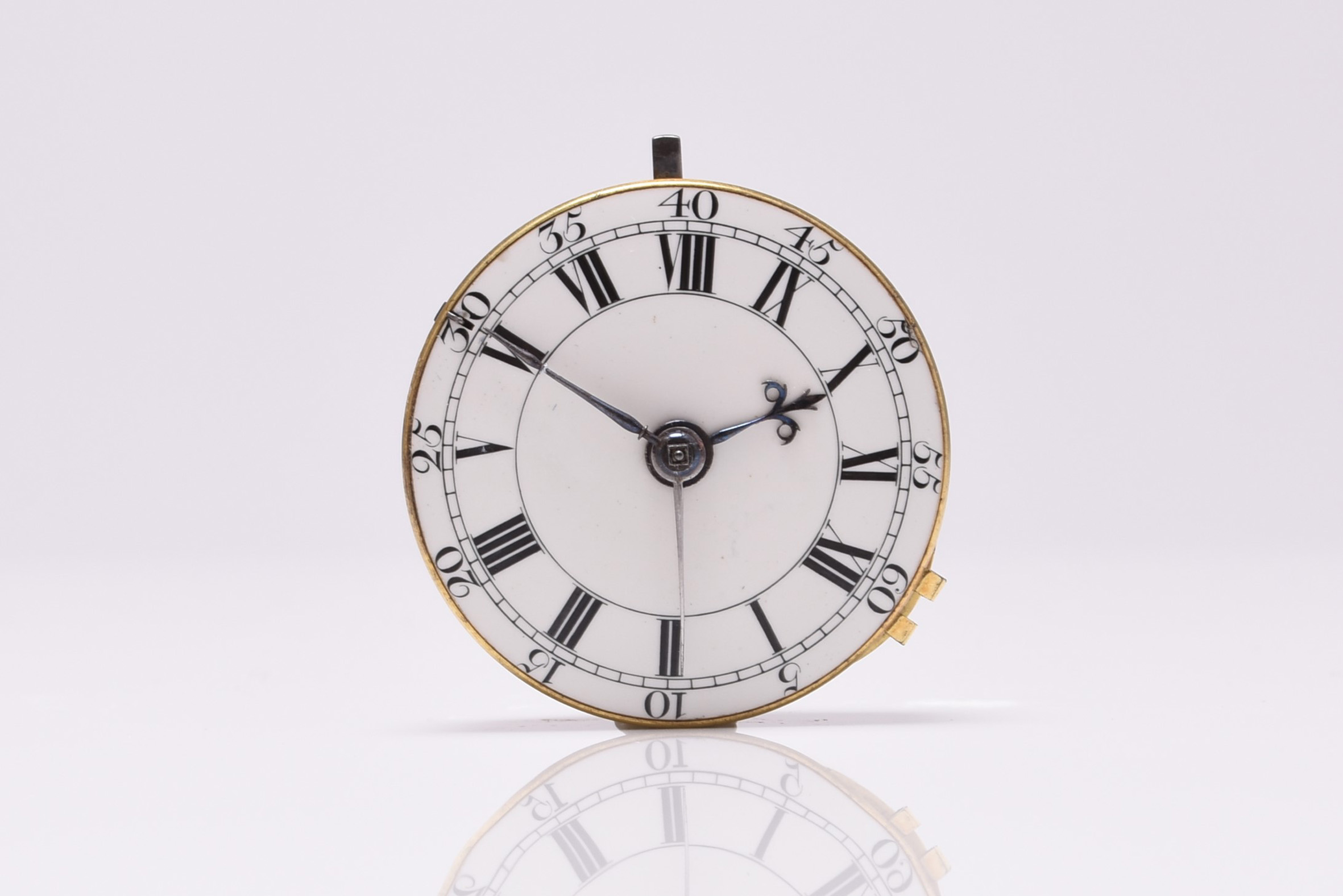A rare pocket watch movement by famous 18th century London watch and clock maker Thomas Mudge is expected to fetch around £2,000 when it comes up for auction in Shropshire next week.
Halls Fine Art’s watches specialist Alexander Clement says the outer gold case of the watch was donated to support Britain’s Second World War effort in 1941. Had the watch been complete, he estimates that it would be worth up to £8,000.
The watch will be going under the hammer at Halls’ fine art, antiques and jewellery auction at the company’s Battlefield headquarters in Shrewsbury on June 12.
Mudge (1717-’94) was a pioneer watch and clock maker who was apprenticed to George Graham, who was himself an apprentice of Thomas Tompion, known as the ‘Father of English clockmaking.
Mudge was considered England’s greatest watchmaker of his time, having invented the detached lever escapement, the most widely used device for regulating the movement of the spring-driven watch which is still used today.
The quality of his work brought him commissions from royalty and other influential customers across Europe. He invented the detached lever escapement in around 1755, introducing it on a smaller scale in a watch made in 1770 for King George III, which was then given to Queen Charlotte of England.
Mudge retired from business in 1771 and turned his attention to improving marine timekeepers. In trials at the Royal Greenwich Observatory, the performance of his chronometer was said to have been unequalled for nearly a century.
“Watches with detached lever movements can all trace their ancestry back to Thomas Mudge,” said Alexander. “The watch we have in our auction on June 12 was made in around 1765 and has a beautifully enamelled dial and a lovely pierced and engraved back movement.
“It has an interesting cylinder movement, an innovation which kept the watch turning at a constant speed. The two things that are most difficult to compensate for with escapements are friction and changing atmosphere, both essential with marine chronometers.
“This watch originally was in pair case – the outer case was probably 22 carat with a repoussé type of embossing in relief, depicting scenes from classical mythology.
“The seller has had the watch for about 30 years and he bought it as a movement without the case. The outer case was donated to the war effort in 1941, as gold was in high demand for use in electronic circuits. Who knows what use the gold case was put to!”
The auction lots will be available to view in the saleroom on Sunday, June 9 from 11am to 2pm and the following Monday and Tuesday from 10am to 4pm. The lots may also be viewed online at https://fineart.hallsgb.com/forthcoming-auctions/ .


